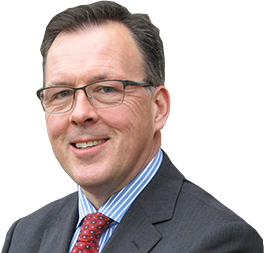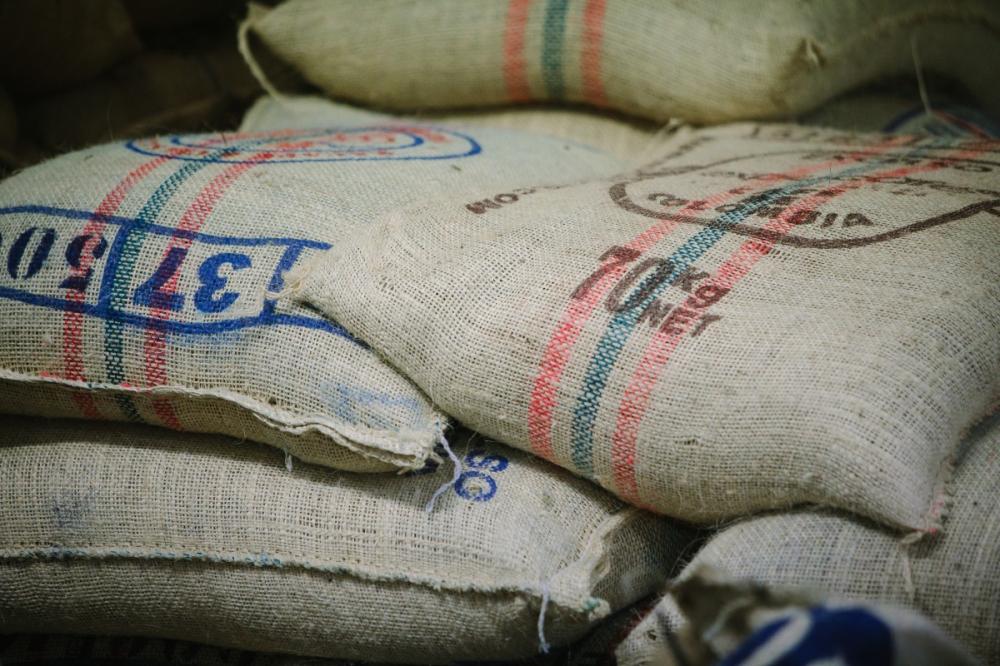search
date/time
 | Lancashire Times A Voice of the Free Press |

Andrew Palmer
Group Editor
3:00 AM 17th May 2022
lifestyle
The Weekender: Drinking Farrer's Coffee With Rob Baines

Group Editor Andrew Palmer sat down with General Manager Rob Baines to learn more about the coffee industry.
How do you kick start yourself in the morning?
Up early for an exercise class? Perhaps you enjoy a glass of freshly squeezed orange juice?
Or do you have a predilection for a cafetiere of freshly brewed coffee?
If it’s the later, then my interviewee this week could help you.

I sat down with my freshly brewed cup of Farrer’s signature blend: Kenya – Slopes of 8 Kirinyaga to hear more about the process of producing coffee from a company that has been roasting coffee for over two hundred years.
Rob is the right man to chat to about Farrers as he started on the shop floor packing coffee and has moved into various roles all the way up to General Manager.
“I’ve sort of done everything within the business, which is great because I got to understand how the various parts of the business work.”
“I think when you know where the various coffees come from, where the green coffee beans are grown, the roasting process, how it ends up with the customer and how the customer makes their coffee, it gives you a holistic perspective. Understanding the whole process from start to finish, rather than one particular aspect of the business drives my passion for coffee and the industry I work in.”
The whole point of coffee is its freshness. We can roast smaller batches, which means we can produce them and get them out of the door the same day, which ensures that our customers and coffee subscribers get the freshest possible product delivered straight to their door.
Green beans. How easy it is to forget about the origin of coffee beans; we are all so used to seeing them after roasting. Beans are sourced from all over the world and Rob utilises a team of brokers that visit farms in different countries and regions. Reporting back to Rob with ideas, prices, availability etc. there are many decisions that need to be made when it comes to the purchasing of green coffee.
We discuss what we would like to roast throughout the year. We have stock items, the ones we always roast and are always available to purchase through our website or for our wholesale customers, but we’re always on the lookout for beans that will complement and enhance our speciality coffee blends. Once we have decided what we want to roast, we purchase that coffee, take delivery of the green beans and then we set about roasting them, changing the parameters of the roasting depending on the coffee we need to produce.”
It's a fascinating process and Rob explains that each coffee is quite different depending on its derivation. Some of the beans, when in the green stage can be soft, others hard, depending on where it is from and that’s why careful calculations must be thought about in the roasting process to cater for those distinct aspects of the bean.


With that amount of variation there needs to be quite a lot of attention to detail. To ensure that no details are missed when roasting there is a computerised screen on the roaster which relays information to Master Roaster.
“It’s all very advanced Andrew. We have a state-of-the-art roasting facility. This includes two smaller roasters, which we use to produce samples and small batches of speciality coffee. We have a 15 kg roaster for doing smaller batches and a 60 kg roaster for larger batches.
“The whole point of coffee is its freshness. We can roast smaller batches, which means we can produce them and get them out of the door the same day, which ensures that our customers and coffee subscribers get the freshest possible product delivered straight to their door.”

Rob explains availability can be an issue. The brokers need to know they can get what we need. They also look at what the market is requiring and what other coffee producers will want, as well as looking at the various regions, farms, and estates within a particular geography.

The coffee brokers spend a lot of time out in the fields monitoring the wash stations and checking the working conditions, as well as checking that they work in part with the Fair-Trade Foundation and The Rainforest Alliance, organisations that work together to improve the entire system within the coffee farming industry.
Farrer’s Wholesale Tea & Coffee Merchants is also an accredited training centre for the Beverage Standards Association (BSA), the only one in the North West. The training centre delivers professional training courses for those in the industry who are looking to develop and enhance their skills. But it also delivers training for members of the public who want to learn how to brew the perfect coffee or want to create amazing latte art.
With several farms involved I wondered if it means the beans are mixed or if there is any exclusivity.
“Some of the farms will keep their own bean as one product; some may go into a wash station to become a mixed batch of coffee, where it is washed, cleaned, and bagged up.
“On the speciality side of our business we try and find a coffee that's from a single origin, what’s known as a single estate coffee. These are coffees we obviously pay more for, because of the way in which they are produced and their limited availability.’’
“At Farrer’s we like our speciality coffees, and we aim to provide a different signature blend every month. This will be rarer or small batch coffees for those who want to sample something they can’t get every day.’’
“We started off with the Kenya in January and have enjoyed a different one each month. May’s small batch comes from the Yunnan Province of China and is a particularly elegant batch.


As coffee is particularly popular in the UK, I am interested to find out if there are any countries that stand out for Rob from customer research. Apparently, coffee subscribers are happy to try different beans. Kenyan coffee is certainly popular but as I’m discovering there’s a huge variety of beautiful coffees out there all with very different taste profiles, just waiting to be discovered.
As our discussion moves on and I opt for another cup, I enquire whether there is a preferred method of preparing the perfect coffee. Is it espresso, drip filter, cafetière?
I love cupping because you can have five coffees all the same bean, roasted differently and with little tweaks you can get the best coffee.
I guess, rightly as it happens, that they all have individual characteristics and I suppose that is what makes Rob’s job so interesting. I often see on packets of coffee with ‘best for a cafetiere’ written on the label. And I’ve often wondered what’s involved in creating that particular type of coffee.
It's all in the grind!
“A cafetiere has a coarser grind, a filter coffee a finer grind because of the paper filter and obviously an espresso coffee, is finer again. It has a talcum powdery type of feel.
“The coarser grind for a cafetiere is because of the metal gauze on the bottom, if the grind is too fine some of the residue can seep through.”


“Ah!” I say aloud, it all makes sense and I need to know what kind of brewing technique Rob uses.
I am surprised, but don’t ask me why; Rob prefers a drip filter.
“I love the cleanness of a drip filter coffee. The whole process is part of making the perfect cup. Grinding of the beans, weighing out the coffee and water, putting it into a drip filter, pouring on my water, then letting it brew for the relevant time. It's two to three minutes and then it is ready. And that, Andrew, is how I drink my coffee every day.”
I’m staggered through my ignorance. Rob weighs out the water. What then is the perfect weight?
“Normally I use about 300 ml or 300g of water to 18 grams of coffee.
“Quite precise” I comment, but it makes sense as my local coffee shop, Coffee at Number 10, in Ripon, consistently provides the perfect cup of coffee, and the owner often says it’s to do with weight.
“That’s because in a coffee shop,” Rob says, “an espresso machine is used, and the grinds are normally set to a parameter they want for their coffee. If they're doing a double shot cappuccino it could be 15 grams of coffee, it could be 18 grams, but it also depends on the darkness and roast of the coffee. Are they lightly roasted coffees? For example, there are so many different variations of roast levels, and the quantity of coffee is also important to get the best from your brew.

Rob Baines
Everyone in the company can contribute and the results are pooled to determine the best way to roast to get the perfect coffee for Farrer’s customers.
“It fascinating and an incredibly good process. I love cupping because you can have five coffees all the same bean, roasted differently and with little tweaks you can get the best coffee. It’s fun and the wonderful thing about it: there's no right or wrong. What people like is what they like.”
I am beginning to realise how much goes on in something I take for granted every day.
So, next time you are sitting in a coffee shop with your white, half fat, low cal, soya or oat milk, chocolate sprinkled, cappuccino, latte, espresso, or Americano, just think of the work that goes into producing a coffee from its origin: choosing the green beans, shipping, roasting and bagging and delivered as with Farrer’s across the UK and abroad.
For Rob and his team in the Lake District, it’s enormously satisfying that someone somewhere is settling down to their morning coffee that comes from one of the oldest roasters in the UK.
I’m ready for another one!
To find out more about Farrers visit: https://farrerscoffee.co.uk
Also by Andrew Palmer...
Classical Music: Tchaikovsky & Korngold String SextetsClassical Music: Gabríel ÓlafsThe Value Of Luck: In Conversation With Martin VenningMozart: Piano Concertos, Vol. 9Classical Music: Ravel, Lennox Berkeley, Adam PoundsMore in this series...
Noughts & Crosses A Play For Our TimeSteve Hackett Chats About Genesis Revisited - Foxtrot At Fifty Hackett HighlightsFederico Bonelli Getting The North To DanceThe Weekend Interview: Finding The Comedy In Guy Fawkes With David ReedWeekend Interview: Concept To Legacy Richard Caborn Ten Years On From The OlympicsWeekend Interview - Preventing Suicide Let’s Start A ConversationWeekend Interview: The Peach Tree RascalsWeekend Interview: Northern Ballet Expressions - Interview With Jem ClancyGetting To Grips With The Abstract Karen SouthworthThe Weekender: Dressing Up With Pauline RourkeWeekend Interview: Chris Glynn On The Wonders Of The Ryedale FestivalWeekend Interview: The Queen Of The Voice Over - Jo PickardWeekend Interview: It’s All About Girl Power With Zandra MooreWeekend Interview: Jay Osmond - Returning To The North Feels Like Coming HomeWeekend Interview: Happenings A Way To Find Well-Being And MindfulnessWeekend Interview: Dr Ronny Krippner Preserving A “Gorgeous Jewel"Weekend Interview: Former Michelin Starred Chef Frances Atkins Talks About Her New VentureWeekend Interview: Understanding The Power Of Literacy With Jason VitWeekend Interview: Tom Bromet On The Joys Of RestorationWeekend Interview: Putting A Smile On The Face Of The Nation